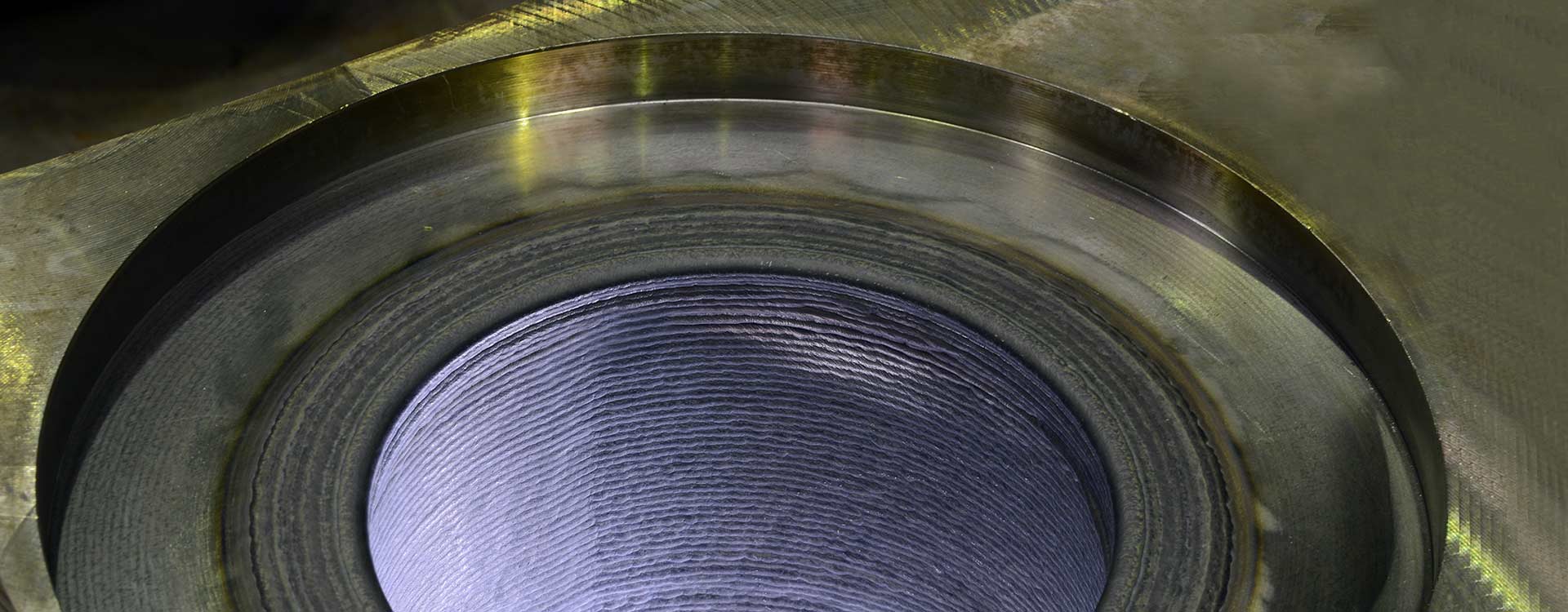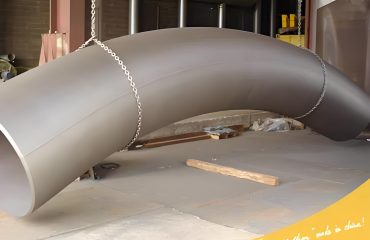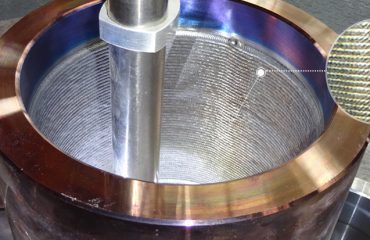
Penyelidikan pada keluli tahan haus untuk memakai lapisan paip keluli komposit
Paip keluli komposit tahan haus digunakan secara meluas dalam industri seperti perlombongan, penjanaan kuasa, Pengeluaran simen, dan metalurgi, di mana pengangkutan bahan kasar menyebabkan haus yang ketara pada saluran paip. Paip ini biasanya terdiri daripada lapisan keluli luar untuk kekuatan struktur dan lapisan tahan haus dalaman yang direka untuk menahan lelasan, hakisan, dan kakisan. Lapisan tahan haus memainkan peranan penting dalam memperluaskan hayat perkhidmatan paip di bawah keadaan operasi yang keras. Kajian ini memberi tumpuan kepada kajian keluli yang digunakan dalam lapisan pakai paip keluli komposit, menganalisis komposisi bahan, Sifat Mekanikal, dan parameter prestasi.
Objektif utama kajian ini adalah untuk mengenal pasti gred keluli yang sesuai untuk lapisan memakai, menilai prestasi mereka melalui parameter utama seperti kekerasan, Merupakan, dan memakai rintangan, dan membentangkan penemuan dalam format berstruktur. Penyelidikan ini juga meneroka pengaruh unsur-unsur aloi dan proses rawatan haba pada prestasi keluli tahan haus. Jadual parameter terperinci akan disediakan untuk meringkaskan sifat -sifat pelbagai gred keluli, diikuti dengan analisis mendalam tentang kesesuaian mereka untuk aplikasi tahan haus.
1. Pengenalan kepada paip keluli komposit yang tahan haus
Paip keluli komposit yang direka untuk rintangan haus biasanya terdiri daripada dua atau lebih lapisan: lapisan struktur luar dan lapisan tahan haungan dalaman. Lapisan luar sering dibuat dari keluli karbon atau keluli rendah aloi untuk memberikan kekuatan dan kelenturan mekanikal, sementara lapisan dalaman, atau memakai lapisan, direkayasa untuk menahan pakaian kasar, hakisan, dan kadang -kadang kakisan. Lapisan haus boleh dibuat dari pelbagai bahan, termasuk seramik, Besi Cor-Chromium Tinggi, atau keluli aloi khas. Dalam kajian ini, Tumpuannya adalah pada lapisan haus berasaskan keluli kerana keseimbangan rintangan haus mereka, Merupakan, dan keberkesanan kos.
Lapisan haus mesti menahan keadaan yang melampau, seperti kesan kasar buburan arang batu, bijih mineral, atau klinker simen. Paip keluli karbon tradisional gagal dengan cepat di bawah keadaan sedemikian disebabkan oleh kekerasan terhad dan rintangan haus mereka. Untuk menangani ini, Keluli tahan lasak dengan kekerasan yang tinggi, Ketangguhan yang Baik, dan penentangan terhadap kesan dan keletihan dikembangkan. Keluli ini sering menggabungkan elemen aloi seperti kromium (Cr), Molybdenum (Mo), vanadium (V), dan nikel (Ni) untuk meningkatkan sifat mereka.
Pemilihan keluli tahan haus untuk lapisan dalaman paip komposit melibatkan perdagangan antara kekerasan dan ketangguhan. Kekerasan tinggi meningkatkan ketahanan terhadap lelasan tetapi dapat mengurangkan ketangguhan, Membuat bahan rapuh dan terdedah kepada retak di bawah kesan. Sebaliknya, Ketangguhan yang tinggi meningkatkan ketahanan terhadap kesan tetapi mungkin berkompromi dengan rintangan haus. Kajian ini mengkaji beberapa gred keluli untuk menentukan kesesuaian mereka untuk lapisan haus, memberi tumpuan kepada komposisi kimia mereka, Sifat Mekanikal, dan memakai prestasi.
2. Pemilihan bahan untuk keluli tahan haus
Pilihan keluli untuk lapisan memakai paip komposit bergantung kepada beberapa faktor, termasuk persekitaran operasi, jenis bahan kasar, dan pertimbangan kos. Keluli tahan karat yang biasa digunakan termasuk besi tuang putih-kromium tinggi, keluli martensit, dan keluli bainit. Setiap jenis mempunyai kelebihan dan batasan yang berbeza, yang dibincangkan di bawah.
2.1 Besi tuang putih-kromium tinggi
Besi Cort White Cast High-Chromium digunakan secara meluas dalam aplikasi tahan haus kerana kekerasan dan rintangan lelasan yang sangat baik. Kandungan kromium tinggi (biasanya 15-30%) Menggalakkan pembentukan karbida kromium keras (Jenis M7C3) dalam matriks martensit, yang meningkatkan rintangan haus dengan ketara. bagaimanapun, kelembutannya menghadkan penggunaannya dalam aplikasi yang melibatkan kesan yang tinggi.
2.2 keluli martensit
Keluli martensit dirawat haba untuk mencapai struktur mikro martensit sepenuhnya, yang memberikan kekerasan yang tinggi dan rintangan haus. Keluli ini sering digabungkan dengan unsur -unsur seperti kromium, Molybdenum, dan vanadium untuk meningkatkan kekerasan dan memakai sifat. Keluli martensit menawarkan keseimbangan kekerasan dan ketangguhan yang lebih baik berbanding dengan besi tuang kritikal tinggi, menjadikan mereka sesuai untuk aplikasi dengan kesan sederhana.
2.3 BAINITIC STEEL
Keluli bainit dicirikan oleh mikrostruktur bainit, yang menawarkan gabungan kekuatan tinggi, Merupakan, dan memakai rintangan. Keluli ini sering digunakan dalam aplikasi yang memerlukan ketahanan terhadap lelasan dan kesan. Penambahan elemen aloi seperti boron (b) dan molibdenum meningkatkan pembentukan bainit semasa rawatan haba.
3. Parameter keluli tahan haus untuk lapisan memakai
Untuk menilai kesesuaian gred keluli yang berbeza untuk lapisan pakai paip keluli komposit, Beberapa parameter utama dipertimbangkan, termasuk komposisi kimia, Kekerasan, Ketangguhan Kesan, dan kadar pakai. Parameter ini diringkaskan dalam jadual di bawah.
| Keluli gred | komposisi kimia (%) | Kekerasan (HRC) | Ketangguhan Kesan (J/cm²) | Kadar pakai (mm³/n · m) | rawatan haba |
|---|---|---|---|---|---|
| Besi CR CR High-CR (A) | C: 2.5, Cr: 25, Mo: 1.0, Si: 0.8 | 58-62 | 5-10 | 1.2 × 10 ⁻⁵ | As-cast + Tempering |
| keluli martensit (b) | C: 0.4, Cr: 12, Mo: 0.5, V: 0.2 | 50-55 | 20-30 | 2.5 × 10 ⁻⁵ | Pelindapkejutan + Tempering |
| BAINITIC STEEL (C) | C: 0.3, Cr: 3, Mo: 0.5, b: 0.003 | 45-50 | 40-50 | 3.0 × 10 ⁻⁵ | Pembasmian Timur |
| keluli aloi rendah (D) | C: 0.2, Cr: 1.5, MN: 1.0 | 40-45 | 60-80 | 5.0 × 10 ⁻⁵ | Menormalkan |
Nota pada parameter meja:
- komposisi kimia: Peratusan elemen aloi mempengaruhi struktur mikrostruktur dan mekanikal keluli.
- Kekerasan: Diukur dalam kekerasan Rockwell (HRC), Nilai yang lebih tinggi menunjukkan rintangan yang lebih baik untuk lelasan.
- Ketangguhan Kesan: Diukur dalam joules per sentimeter persegi (J/cm²), Nilai yang lebih tinggi menunjukkan rintangan yang lebih baik terhadap kesan.
- Kadar pakai: Diukur dalam milimeter padu per Newton-Meter (mm³/n · m), Nilai yang lebih rendah menunjukkan rintangan haus yang lebih baik.
- rawatan haba: Proses yang digunakan untuk mencapai struktur mikro dan sifat yang dikehendaki.
4. Analisis parameter keluli untuk aplikasi lapisan memakai
4.1 Besi Cor-Chromium Tinggi (Keluli a)
Besi Cor-Chromium Tinggi (Keluli a) mempamerkan kekerasan tertinggi di antara bahan yang dinilai, dengan julat HRC 58-62. Ini disebabkan oleh kehadiran karbida keras M7C3 dalam matriks martensit. Kadar haus 1.2 × 10 ⁻⁵ mm³/n · m adalah yang paling rendah, menunjukkan rintangan haus yang sangat baik. bagaimanapun, Kekuatan kesannya adalah buruk (5-10 J/cm²), menjadikannya mudah retak di bawah keadaan berimpak tinggi. Keluli ini paling sesuai untuk aplikasi yang melibatkan lelasan tulen, seperti mengangkut abu arang batu atau buburan simen, di mana kesannya adalah minimum.
4.2 keluli martensit (Keluli b)
keluli martensit (Keluli b) menawarkan gabungan kekerasan yang seimbang (50-55 HRC) dan kesan ketangguhan (20-30 hari/cm²). Kadar hausnya 2.5 × 10 ⁻⁵ mm³/n · m lebih tinggi daripada besi tuang kromomium tinggi tetapi masih boleh diterima untuk banyak aplikasi. Penambahan 12% kromium meningkatkan rintangan kakisan, manakala molibdenum dan vanadium meningkatkan kebolehkerasan dan rintangan haus. Keluli ini sesuai untuk aplikasi yang melibatkan kesan sederhana dan lelasan, seperti mengangkut bijih mineral kasar.
4.3 BAINITIC STEEL (Keluli c)
BAINITIC STEEL (Keluli c) Memberi ketangguhan kesan terbaik (40-50 d/cm²) Antara keluli tahan haus yang dinilai, dengan kekerasan 45-50 HRC. Kadar hausnya 3.0 × 10 ⁻⁵ mm³/n · m lebih tinggi daripada keluli martensit, menunjukkan rintangan haus sedikit lebih rendah. Mikrostruktur Bainit, dicapai melalui Austempering, menawarkan ketahanan yang sangat baik terhadap keletihan dan kesan. Keluli ini sesuai untuk aplikasi yang melibatkan kesan yang tinggi dan lelasan sederhana, seperti saluran paip dalam operasi perlombongan dengan saiz zarah yang besar.
4.4 keluli aloi rendah (Keluli d)
keluli aloi rendah (Keluli d) berfungsi sebagai garis dasar untuk perbandingan. Dengan kekerasan 40-45 hrc dan kadar haus 5.0 × 10 ⁻⁵ mm³/n · m, ia mempunyai rintangan haus terendah di antara bahan yang dinilai. bagaimanapun, kesannya (60-80 d/cm²) adalah yang tertinggi, menjadikannya sesuai untuk aplikasi di mana rintangan impak adalah kritikal, Tetapi rintangan haus kurang menjadi perhatian. Keluli ini tidak biasanya digunakan untuk lapisan haus tetapi boleh berfungsi sebagai lapisan struktur luar dalam paip komposit.
5. Pengaruh elemen aloi dan rawatan haba
Prestasi keluli tahan haus sangat dipengaruhi oleh komposisi kimia dan proses rawatan haba. Berikut adalah perbincangan terperinci mengenai faktor -faktor ini.
5.1 Peranan Elemen Pengaliran
Elemen Mengalo memainkan peranan penting dalam menentukan mikrostruktur dan sifat keluli tahan haus. Chromium adalah elemen yang paling penting untuk meningkatkan kekerasan dan rintangan memakai dengan membentuk karbida. Dalam besi tuang kritikal tinggi (Keluli a), yang 25% Kandungan kromium menghasilkan pecahan volum tinggi karbida M7C3, menyumbang kepada rintangan haus yang luar biasa. Molybdenum meningkatkan kebolehkerasan dan rintangan terhadap pembajaan, sementara vanadium menapis struktur bijirin dan meningkatkan rintangan memakai dengan membentuk karbida halus. Dalam keluli bainit (Keluli c), Penambahan boron menggalakkan pembentukan bainit, meningkatkan ketahanan dan rintangan keletihan.
5.2 Kesan rawatan haba
Proses rawatan haba seperti pelindapkejutan, Tempering, dan austempering digunakan untuk mencapai mikrostruktur dan sifat yang dikehendaki. Untuk keluli martensit (Keluli b), Pelindapkejutan diikuti oleh pembajaan menghasilkan mikrostruktur martensit sepenuhnya dengan kekerasan yang tinggi dan keliatan sederhana. Pembasmian Timur, digunakan untuk keluli bainit (Keluli c), melibatkan transformasi isoterma untuk membentuk bainite, yang menawarkan keseimbangan kekerasan dan ketangguhan. Besi Cor-Chromium Tinggi (Keluli a) biasanya digunakan dalam keadaan ast-cast dengan tempering pilihan untuk melegakan tekanan sisa.
6. Pertimbangan Praktikal untuk Reka Bentuk Lapisan Pakai
Semasa merancang lapisan pakai paip keluli komposit, Beberapa pertimbangan praktikal mesti ditangani:
-
- Persekitaran operasi: Jenis bahan kasar, saiz zarah, velocity, dan keadaan kesan menentukan pilihan keluli. Untuk pengabaian yang baik dengan kesan yang rendah, besi tuang kritium tinggi sangat sesuai. Untuk bahan kasar dengan kesan yang tinggi, Keluli bainit lebih baik.
- Kos vs. Prestasi: Besi tuang kromomium tinggi lebih mahal daripada keluli martensit atau bainit tetapi menawarkan rintangan haus yang unggul. Pilihan bergantung pada hayat perkhidmatan dan kekangan anggaran yang diperlukan.
- Pengilang: Lapisan haus mestilah terikat secara metalurgi ke lapisan keluli luar, selalunya melalui pemutus atau pelapisan sentrifugal. Keserasian keluli dengan proses ini mesti dipertimbangkan.
- Penyelenggaraan dan penggantian: Lapisan haus harus direka untuk penggantian mudah jika perlu. Paip komposit dengan lapisan haus yang boleh dilepaskan dapat mengurangkan kos downtime dan penyelenggaraan.
7. Kesimpulan
Lapisan paip keluli komposit yang tahan haus memainkan peranan penting dalam memperluaskan hayat perkhidmatan saluran paip dalam persekitaran yang kasar. Kajian ini menilai empat gred keluli untuk kesesuaian mereka sebagai lapisan haus: Besi Cor-Chromium Tinggi, keluli martensit, BAINITIC STEEL, dan keluli rendah aloi. Besi Cor-Chromium Tinggi mempamerkan rintangan haus yang terbaik tetapi ketangguhan yang lemah, menjadikannya sesuai untuk aplikasi berimpak rendah. Keluli martensit menawarkan gabungan kekerasan dan ketangguhan seimbang, sementara keluli bainit memberikan rintangan impak terbaik. keluli aloi rendah, Walaupun sukar, kekurangan rintangan haus yang diperlukan untuk kebanyakan aplikasi.
Pilihan keluli bergantung pada keadaan operasi tertentu, termasuk jenis bahan yang kasar, Tahap kesan, dan kekangan kos. Elemen Mengelosan dan Proses Rawatan Haba Sangat mempengaruhi prestasi keluli tahan haus, Membenarkan penyelesaian yang disesuaikan untuk memenuhi keperluan yang pelbagai. Parameter yang dibentangkan di dalam jadual memberikan gambaran menyeluruh mengenai sifat setiap gred keluli, Berkhidmat sebagai rujukan berharga bagi jurutera dan pereka.




anda mesti log masuk untuk menghantar komen.